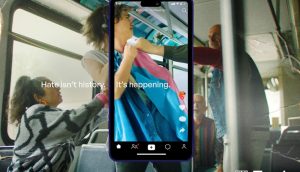Ad Week in New York always delivers a who’s who of adverati, and while this year is no exception, the A-list speaker lineup has gone deeper into the tech and social sides of pop culture leaders, especially at the final day of IAB’s MIXX event yesterday.
To get a handle on how fiscally challenged media will fare in the digiverse, PBS interviewer Charlie Rose had a one-on-one with Chris Anderson, editor-in-chief of Wired, geek dad blogger and author of Free: The Future of a Radical Price.
When asked where we’re at in the digital revolution, Anderson replied, ‘the problem with the web, from a media point of view, is that it represents the end of the monopoly. We now have infinite competition and infinite inventory, so what we’re doing right now is inventing new business models that actually work.’ According to Anderson’s book, the smart money is on the concept of the ‘freemium,’ wherein you give away some of your content, say 90%, and lure traffic to monetize a premium 10%.
While the consumer has grown accustomed to free, they will pay if there’s a value equation. Anderson explains: ‘time is your most valuable asset, so the money is irrelevant,’ adding, ‘we all have to figure out new revenue streams that will compensate for what’s probably lasting change.’
The quest means more niche audiences, and Anderson says the ad industry needs to invent new forms of advertising in smaller, more intimate milieus: ‘It’s small to small. It’s very hard for Clorox to decide the right ad for a needlepoint community. We need to figure out how to create something that doesn’t look like the banner ads we’ve come to ignore…We need to take our mass business models and scale them down to a million niches.’
A few more words for the wise from the book: you can make money from free (think the Monty Python YouTube high-quality clips giveaway gambit that reignited DVD sales); and sooner or later you will compete with free.
R/GA’s deep digital niche
A fireside chat with Bob Greenberg (pictured left, below), chair/CEO and Global CCO of R/GA and Nick Law (right), EVP CCO R/GA North America, yielded some interesting nuggets from the digital agency side of the pixel.

R/GA is unique in that they create product and software, have deep digital expertise and are also involved in media, specifically the creation thereof for big brands such as Nike via platforms that become part of people’s media habits. Really deep niches, if you will.
When asked where R/GA fits in the big three agency divide – creative, media or digital – Law replied, ‘those labels are a litle bit tired…and should be killed.’
Warming to the topic of doing away with things post-digitally, Greenberg posited the demise of advertising’s favourite addiction. ‘I think the day of the pure metaphor is dead.’ While clarifying that Mac/PC is a hybrid (being a combo of metaphor and demo), he noted that ‘at Cannes, 95% of the ads that won in film and TV were complete metaphors.’ He says ‘going forward, I think it will be about stories about the products,’ citing that ‘a lot of what we do for Nike is training. ‘
Law concurs: ‘If you look at media habits today, for marketing, they want to know something about a product.’
Google: the end of digital marketing
Google president global sales operations and business development Nikesh Arora also believes digital’s impact on advertising is still evolving. Arora talked about ‘the end of digital marketing,’ and mapped out the journey from the dawn of advertising and media to today, proving that ads always lag behind technology and content. He demonstrated with an early TV Barbie ad that was a still montage with a radio jingle track. His point? It took decades to develop optimal use of the medium.
‘I believe we’re at a point where search is understood by most people, display hasn’t developed so fast and we’re still early in mobile and social. It just takes longer for advertising to kick in. Our instinct is to cut and paste from the old media.’
The demise of digital so greatly exaggerated in the title refers to the time (soon) when the term ‘digital’ will be dropped and it will just be ‘marketing,’ just as horseless carriages became cars.
Here’s Arora’s predictions on where the digital ad industry will go in the next five to eight years: everything is localized down to you; there will be a new generation of information created by you; marketing is the new finance, with a sample size of all; and all advertising is engaging.
‘The internet as a medium allows us to create bi-directional media,’ says Arora. ‘We’re still in the horseless carriage stage, but in the next five years, 30 to 50% will be this kind of marketing.’
Ashton Kutcher: marketing Katalyst
Actor/producer Ashton Kutcher, cofounder of Katalyst Media, was the showstopper in every sense of the term. Katalyst, which started as a TV and film production co, has evolved into a studio that also works with ad agencies. And by harnessing his social media presence and expertise, Kutcher’s team develops brand insights, stories and programs for advertisers – looking to bypass the horseless carriage.
Kutcher, who famously has four million Twitter followers, describes brand adventures in social media as ‘an unknown frontier’ and explains Katalyst’s role as ‘trying to lead the movement into that space.’ He cautions that you can’t use traditional advertising in social-media circles: ‘we try to build bottom-up insights,’ and then work with consumers to determine how they want to see brands in the social media landscape, and match those insights with brand goals.
‘It’s a continual focus group, you put it up and they immediately say ‘we like that,’ and throw you something back and help you build the campaign.’
For instance, Kellogg teamed up with Katalyst to encourage donations to hunger relief organization Feeding America via Facebook.com/kelloggcares. To drive traffic, they crowdsourced an online video directed by Demi Moore, featuring user-generated content sent by fans responding to Facebook requests and tweets from @aplusk (Ashton Kutcher) and @mrskutcher (Demi Moore).
He’s also involved in Dewmocracy, a UGC project for Mountain Dew in which consumers created the next three products, picking the flavours, the colours, designing the packages and the ads. ‘That’s the social web,’ says Kutcher.
He says that having his brand work spill over into his personal social media presence is authentic. ‘It’s easy when a brand wants to feed America. I posted something about what we’re doing with Dewmocracy, beause I think opening it up to the social web is a cool thing.’
Perhaps as a celebrity, he’s more used to social media’s always-on scrutiny than most, but theorizes that all roads, including the reality takeover of TV, lead to less ‘us and them’ divides: ‘I love this open universe. We’re trending towards a space where we all live in public. Consumers are living in public, at home with a webcam. Brands have to live in public too. Peel the curtain back. Sometimes you’ll take some dings, but as long as your intention is right, it works.’
As to what Kutcher sees as the next big thing, he pegs mobile social networks. ‘The more you can reach them on their mobie devices, the more you can incentivize them to do certain things. You need different messages for local markets.’
He believes the big industry buzz at next year’s Ad Week will be debating the metrics of social web. Kutcher says the industry needs to devise an impact metric – calibrating the value between how much you care when someone you know and trust tells you something, versus a random stranger.
MDC and Aegis: does Madison Ave have a future?
Given the rise and impact of social media, over at the final day of the OMMA conference, a panel of top media agency execs were pondering: ‘Does Madison Avenue have a Future?’
Brandon Berger, VP digital innovation, MDC Partners, opined that it did, and that the industry is moving towards an idea model. ‘First we unbundled, now we’re moving back to bundling in creativity, delivering ideas. I think taking risks and the entrepreneurial spirit that made Madison Avenue is definitely coming back.’
Nigel Morris, CEO Aegis Media, North America, said that while the number one thing that drove the ad biz, scarcity, has been blown apart, they still have number two: ‘making it work.’ As per Morris, ‘we have to establish the value in all these channels, that’s why I think we have a future; it’s not how will we make money from social media, it’s how we help them use it to sell products and prove our value.’
Pointing out that Nokia once made rubber boots, Morris says the media agency world can also transform: ‘we are also innovative and have the tools, and can get to the area where we can deliver commercial success to our clients and tie that to compensation.’
Better get on that – seems like the Katalysts of the world are also innovative and are honing their crowdsourcing tools.
The MIXX awards Best in Show also went to a crowdsourced campaign. Cannes darling Tourism Queensland and CumminsNitro Brisbane’s ‘The Best Job in the World,’ a global example of harnessing people media, tapped consumer willingness to generate their own content – and the 35,000 individual videos from 197 countries triggered traditional media – mostly unpaid.























